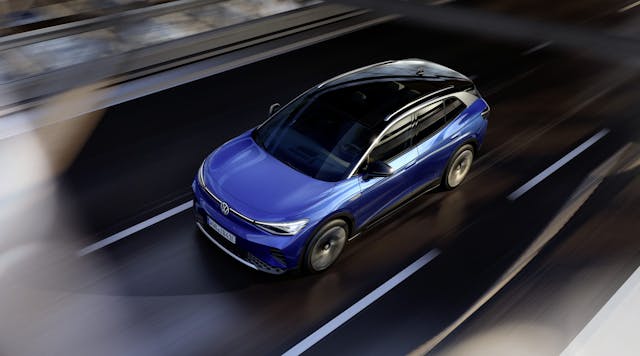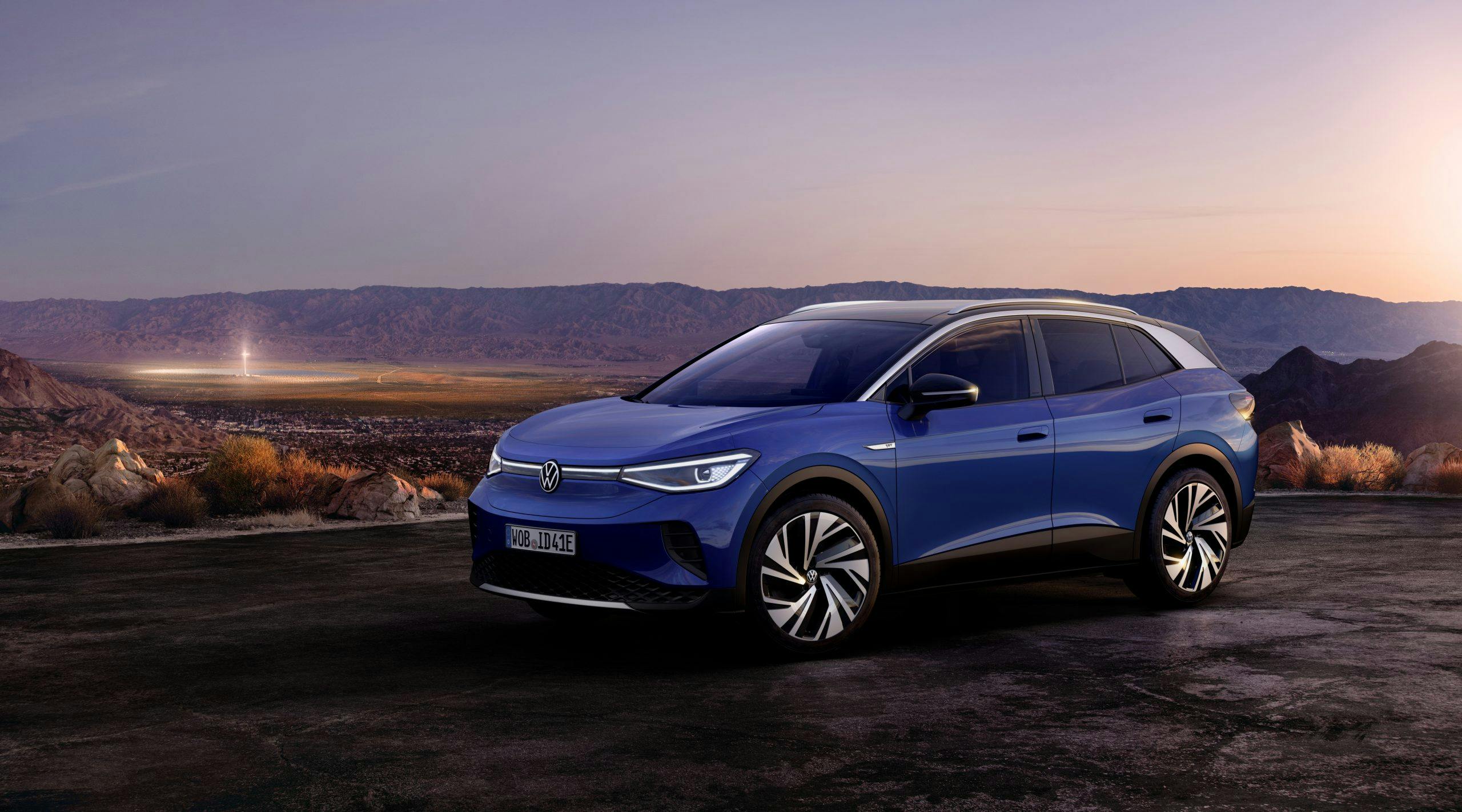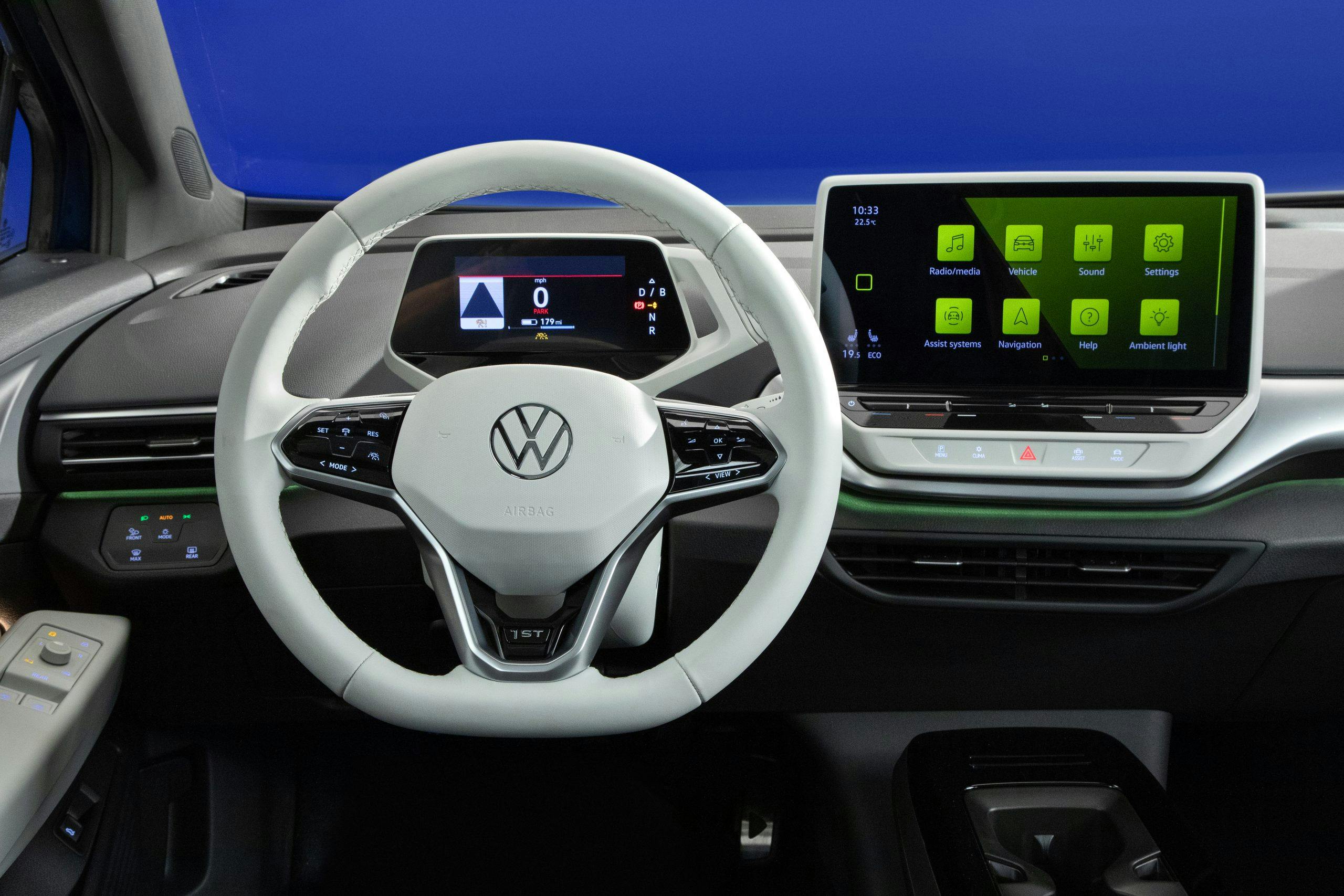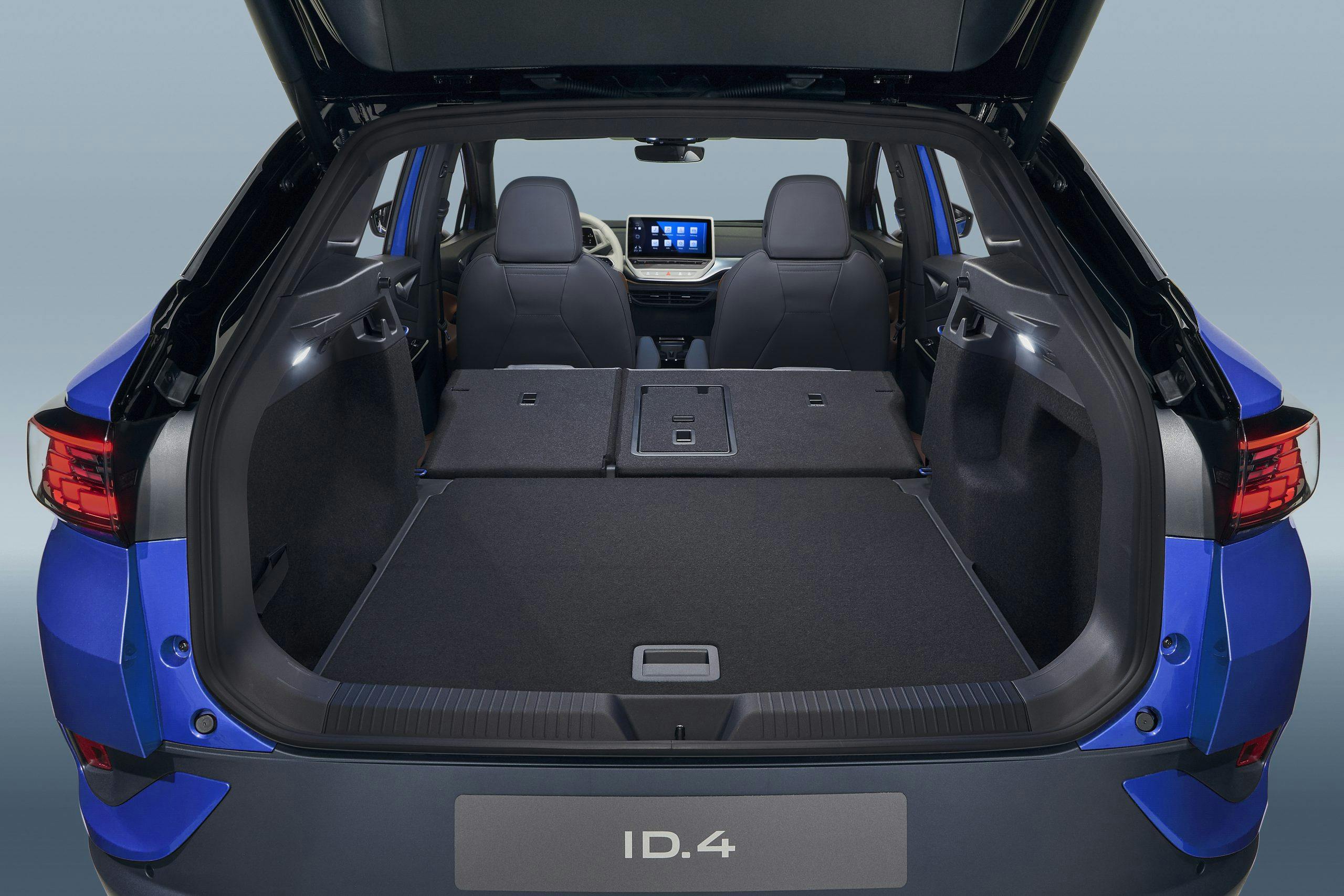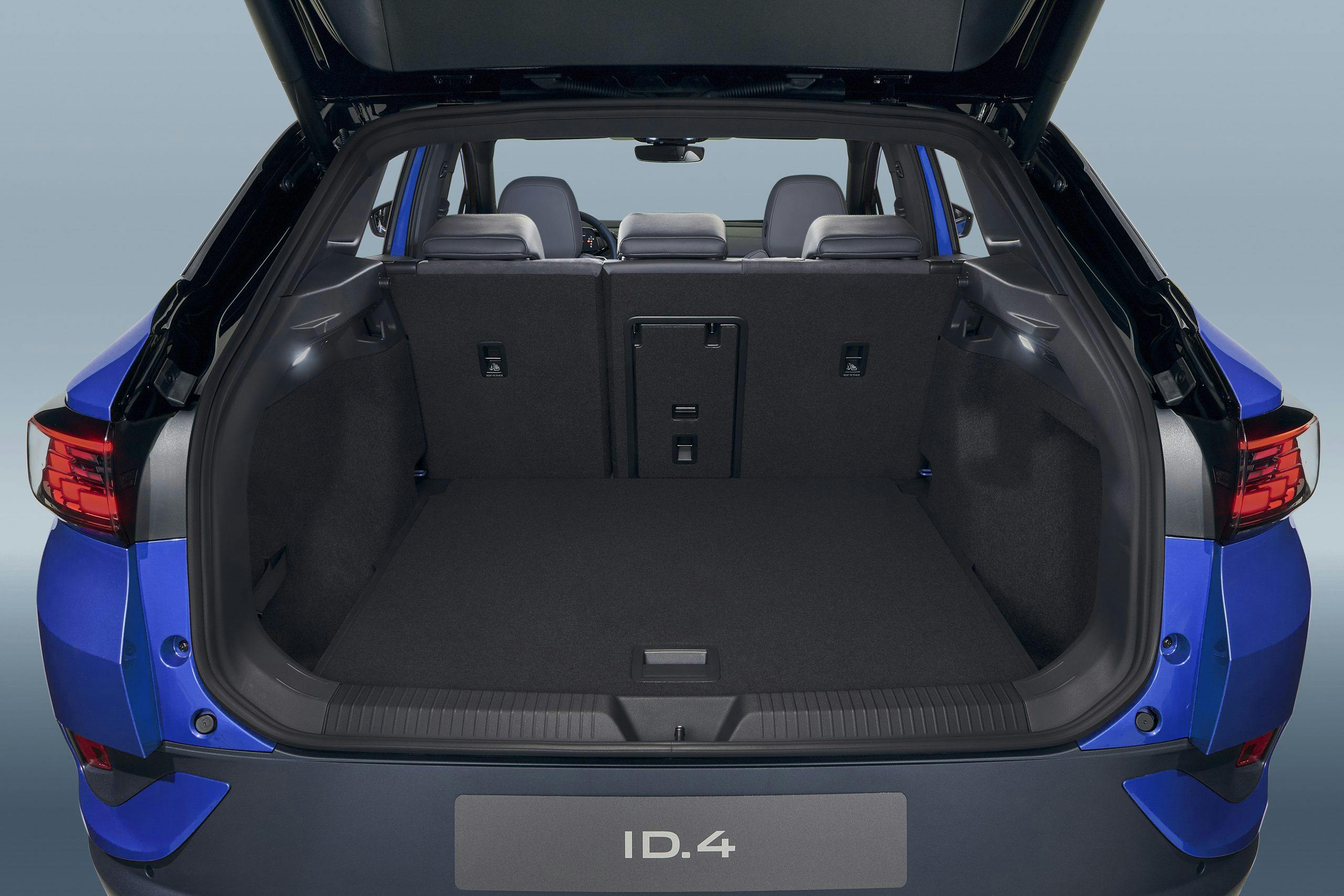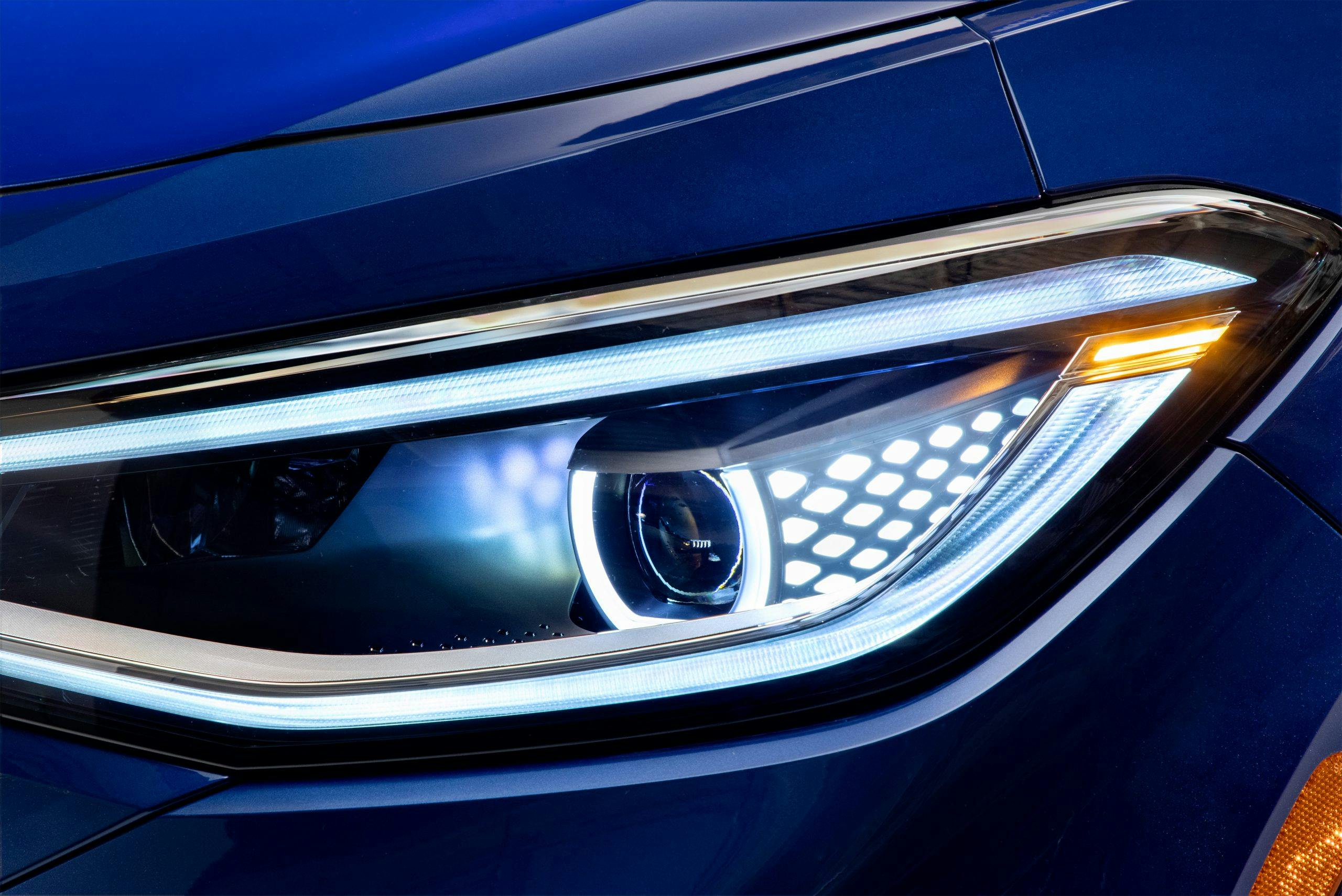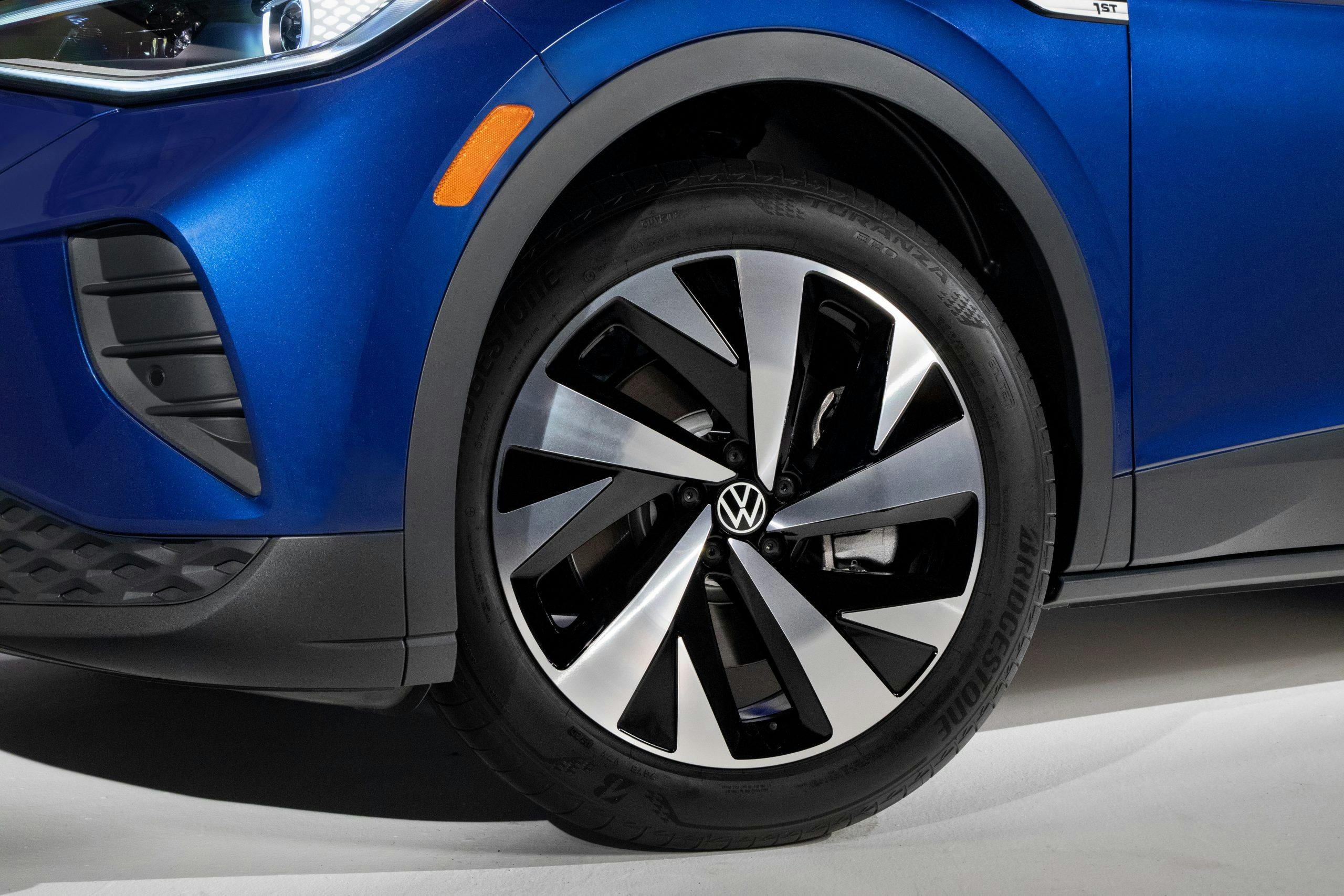Media | Articles
Volkswagen’s electric ID.4 SUV is poised to convert the EV-curious
Rather than stake its foray into the U.S. EV market on a hatchback, Volkswagen has wisely decided that its first long-range EV sold stateside will be a compact SUV. From our first glance, the ID.4 looks like it’s nailed the successful SUV formula: a screen-focused, tech-heavy interior; an unalarming exterior; healthy cargo capacity; and an accessible price point.
The 201-horsepower 1st Edition introduces the ID.4 range, which will grow to include two Pro models (rear- and all-wheel-drive) later in 2021, plus a “localized” U.S.-specific offering somewhere down the road. While both 1st Edition and Pro models use the same 82-kWh battery, the all-wheel-drive Pro configuration will offer 101 more horsepower, for a total of 302.

The ID.4 rides on VW’s modular electric platform (MEB). The synchronous AC motor sits in the rear of the steel chassis, and the battery rests in a protective aluminum frame. While there’s nothing spine tingling about the suspension (springs and dampers all around, with control arms in front and a multi-link rear), the brake system is unusual: discs up front and drums out back. VW cites EV’s dependence on regenerative braking, pointing out that drum brakes are better suited to infrequent, relatively light use than discs would be.
Despite the multitude of 1st Edition details sprinkled throughout the first run of ID.4s, VW’s electric SUV won’t cause anyone to spill their extra-hot venti latte. That said, we’re relieved to see VW introducing some curvy lines into an SUV; a potential contributor to the ID.4’s 0.28 Cd. Up front, a light bar conjures the headlight-connecting grille characteristic of VW. A white stripe traces the greenhouse’s profile, leading to a vaguely sporty spoiler, and the rear lights pack the requisite edgy details. Inoffensive styling is a safe play, however, and the ID.4 sticks to the understated aesthetic beloved by urban and suburban buyers.
Hagerty’s own Jason Cammisa was able to preview the ID.4 in person, and his impressions were largely positive: “Visually, it’s more appealing than most of the compact crossovers it competes with. Halfway between a longroof wagon and a tall SUV, it’s got the proportions of future transportation pods.”
Marketplace
Buy and sell classics with confidence
The ID.4 is slightly smaller than its closest counterpart in the VW lineup, the combustion-powered Tiguan. The EV is 180.5 inches long, rides on a 108.9-inch wheelbase, and is 72.9 inches wide. The electric model sits a lower than the Tiguan at 64.4 inches high (though this could vary with upcoming all-wheel-drive models).
The interior sticks to the same minimal lines as the exterior but adds far more digital flair. A 5.3-inch digital instrument panel sits behind the steering wheel, flanked by a 10-inch touchscreen in the middle of the dash (this can be upgraded to a 12-inch unit). Though VW has included analog controls for volume and temperature, driver and passenger can control the central screen via gestures. Naturally, there’s nothing so outdated as a gearshift, which is replaced by a rocker switch. Potential buyers will probably be most wowed by the lighting cues in the ID.4, however. Beneath the windshield sits a light strip (VW calls it ID.Light, unsurprisingly), and it flashes different colors to alert the occupants whether the EV is on, locked or unlocked, and even provides visual cues for charge status and incoming phone calls.
The ID.4’s rear seats—which, honestly, don’t look that comfortable—can fold to increase cargo volume from 30.3 cubic feet to 64.2. However, Cammisa points out an area of wasted opportunity: the front of the vehicle.
“The ID.4 has no frunk, just a series of randomly placed components with acres of wasted space between them. When asked why the Germans didn’t arrange the components around the perimeter to create a storage compartment, they pointed out how big the rear cargo hold is.”
VW’s promising an EPA range of 250 miles for the ID.4. The 11-kW onboard chargers give you back 33 miles in roughly an hour; using a public Level 2 or at-home unit, a full charge takes around 7.5 hours. If you’ve got access to 125-kW charging, the ID.4 can juice itself from 5 percent to 80 percent in under 40 minutes. To make things easier—at least for the first three years—VW’s including a free membership to Electrify America. However, the charging network’s highest tier is only $4 a month, and stations are open to any “guests” at a slightly increased cost.

To woo buyers in colder climates, the ID.4 boasts a standard heated steering wheel and side mirrors; the all-wheel-drive Pro model, when it arrives, will have a standard heated windshield. Voice control, which activates in response to “Hello ID,” comes standard. Of course, there’s the usual cornucopia of driver-assistance functions: emergency braking, blind spot monitoring, adaptive cruise control, and lane-keeping.
Buyers will likely wait the longest for the cheapest ID.4. Volkswagen promises the U.S.-specific model to sticker around $35,000, but the limited-run 1st Edition—currently the only available model—carries an MSRP of $43,995. The rear-wheel-drive Pro model will start a tick below $40,000, and its more powerful, all-wheel-drive sibling at $43,695.
Potential customers should probably budget an additional $4500, however, for the Statement package, which bundles all the most desirable features: 12-way-adjustable, massaging leatherette seats; a panoramic fixed-glass roof; 30-color ambient lighting; and an illuminated front badge and “grille” line. Stacking on the Gradient package ($1500) adds 20-inch wheels, a black roof, and silver roof rails and accents. For those who just can’t wait, the ID.4 1st Edition combines both packages—plus cute details like “play” and “pause” logos on the accelerator and brake pedal.
Cammisa’s verdict? “Overall, the car will make a nice suburban runabout for early adopters willing to switch to electricity. I doubt very much it’ll put a dent in Tesla Model Y sales, as that SUV offers more range, more power, more features, and a lot more power for similar money.”
Does the ID.4 have what it takes to charm city-chic buyers curious about the EV life? We’ll reserve a final judgment until we’ve experienced the EV ourselves, but it certainly looks promising.
